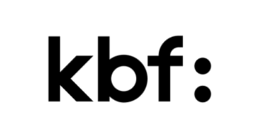Face the wall of vocal and electronic noise produced by Zespół Wokalny Gęba and Wolfram playing Zbigniew Karkowski’s Encumbrance or lie back and rest on the long waves of Éliane Radigue’s violin drones featured in Occam II. Perhaps you’d rather let your ears be massaged with auditory illusions in Anthony Pateras’ Pseudacusis? Noise and drone music have been a mainstay of the Sacrum Profanum Festival for four years now.
This year is not going to be different – this is clearly visible right from the get-go, upon seeing the title of a new work by Angélica Castelló – Bodies of Noise for two pianos, two sets of percussion instruments, cassette players, radios and electronics. Regarding the origin of the work, the author said: “There were three main elements that constituted the foundation of this work – an idea to pay a tribute to Gustav Mahler, the number 5 and my research regarding the human body, resonating objects and rooms. [...] I find words, texts and events from my life, stories, dreams and fantasies… Words that sound like lyrics to a mysterious song, loosely combined together. All of these elements form a complex map, a labyrinth of sorts which leads me around in silence, until I find other associations and sounds in my mind.” The artist often uses archive radio recordings, along with their signature noise – and slightly pushes them into noisy ambient.
Of course, the programme of the Sacrum Profanum Festival would not be complete without a meeting with Zbigniew Karkowski’s radical arte dei rumori. The late artist, who became a legend in the alternative circles, has only recently gained recognition in the mainstream. His Nerve Cell_0 for cello and electronics (2012) will be performed by Anton Lukoszevieze, while Zespół Wokalny Gęba led by Antoni “Baksak” Beksiak will showcase his Encumbrance – in both performances, the electronic parts will be played by Wolfram. Karkowski’s music is constructed out of rough walls of noise, produced using strong amplification and brutal instrumental and vocal techniques. The artist never wrote down classic scores – instead, he focused on working directly with the performers, using samples and mixes.
The preference for oral tradition connects Zbigniew Karkowski with Éliane Radigue – a generation-older honourable senior of minimalist electronic music, still active in the scene. Her Occam II will be performed by Irvine Arditti, who learned this piece thanks to violinist Silvia Tarozzi – and thus, the piece lives on. Radigue is a practitioner of a form based on very slow development in the field of sound and dynamics, often limiting the material to extreme extent. The French artist uses low frequencies, which she considers close to her heart – causing thumping and combination tones – the exact same ones, which were used by Australian pianist and composer Anthony Pateras as the main theme of his Pseudacusis.
In an interview with Jakub Knera, he summed up this piece for six instrumentalists and six speakers in the following manner: “For me, music is the most interesting when I don’t know what goes on in the texture and function layers of sound. Most often this has something to do with illusions, when something seems familiar, but not really… When you think something is there, but in reality, it is not. Pseudacusis is an in-depth exploration of unobvious phenomena of musical perception, as well as the ways instruments react to electronics – in mysterious and hallucinogenic ways. With this piece, I try to change perception by immersing the listeners in music.” The sounds revolve around the listeners on spatial trajectories, and the samples interact with instruments, creating a play of reflections, multiplications and breakdowns as if in a lit underground lake.
Jan Topolski (Glissando) for the Krakow Festival Office

